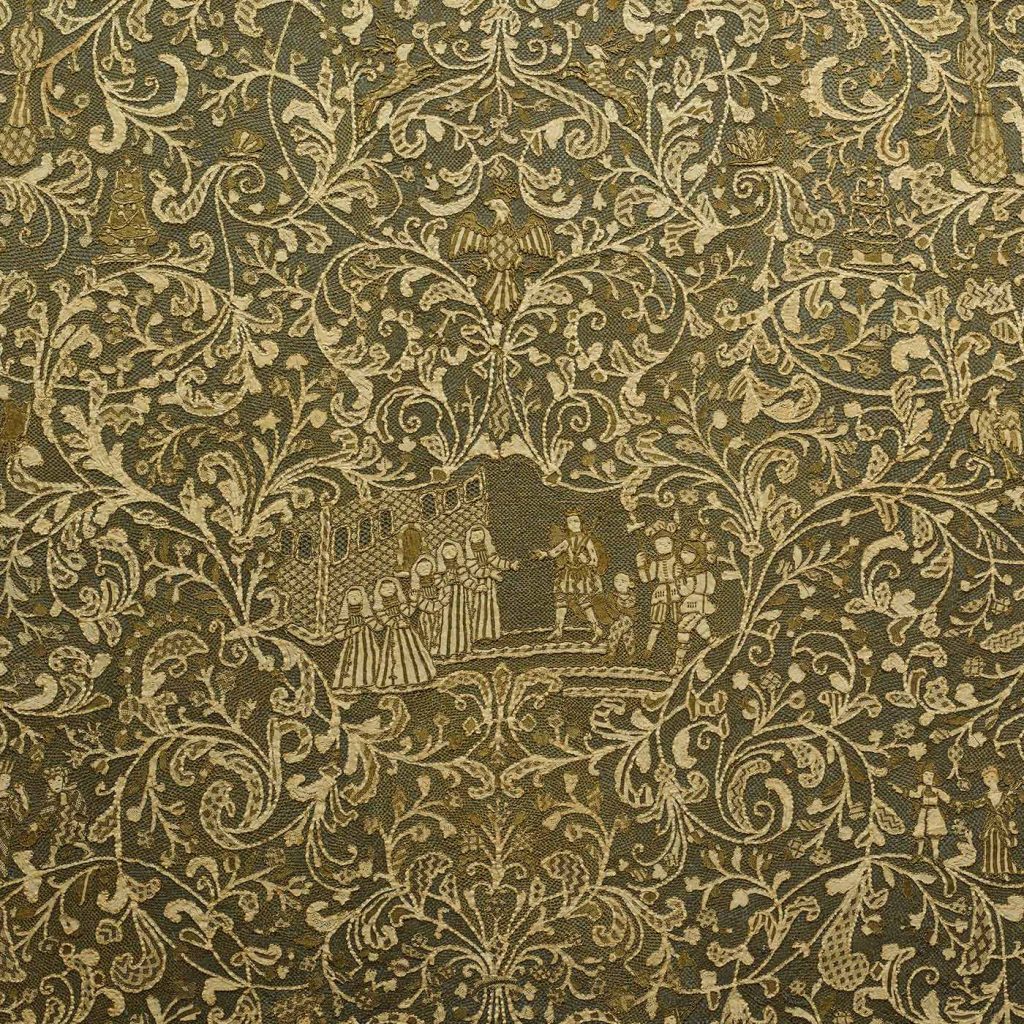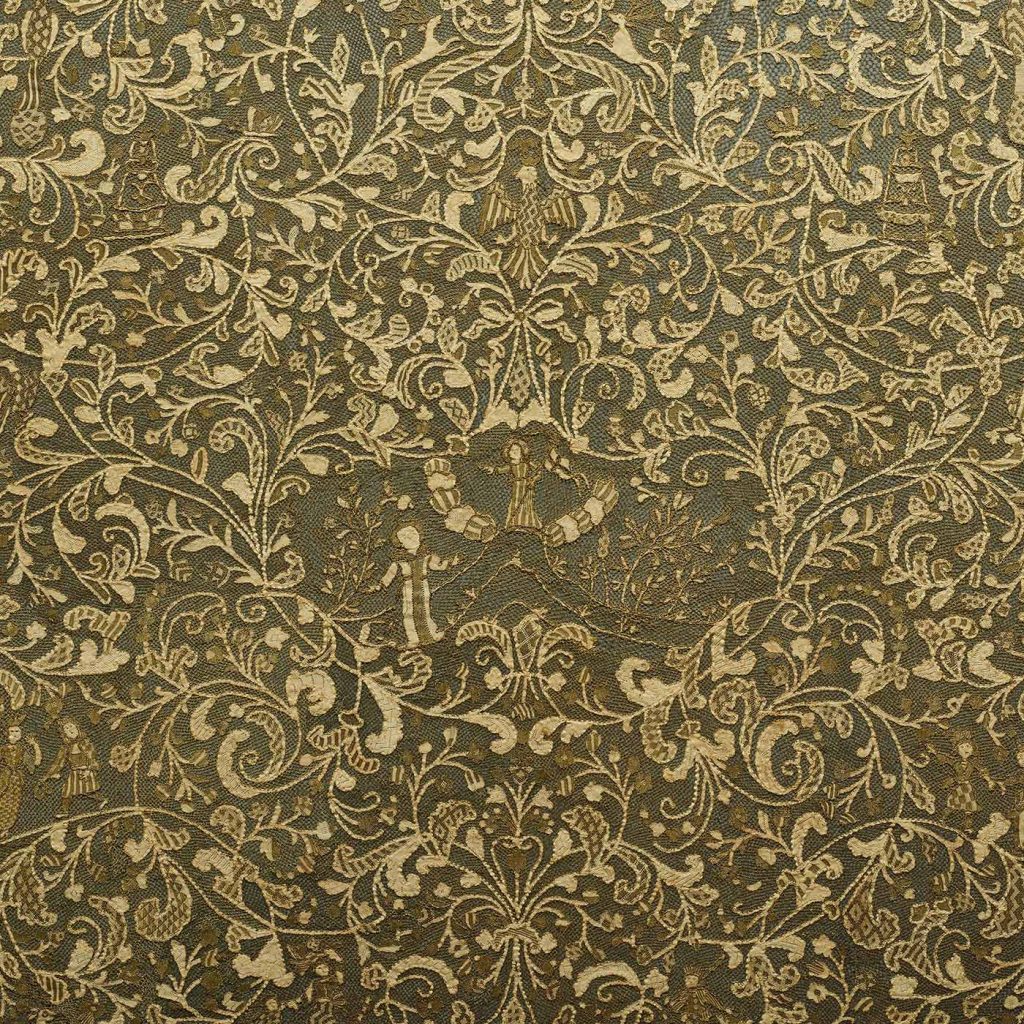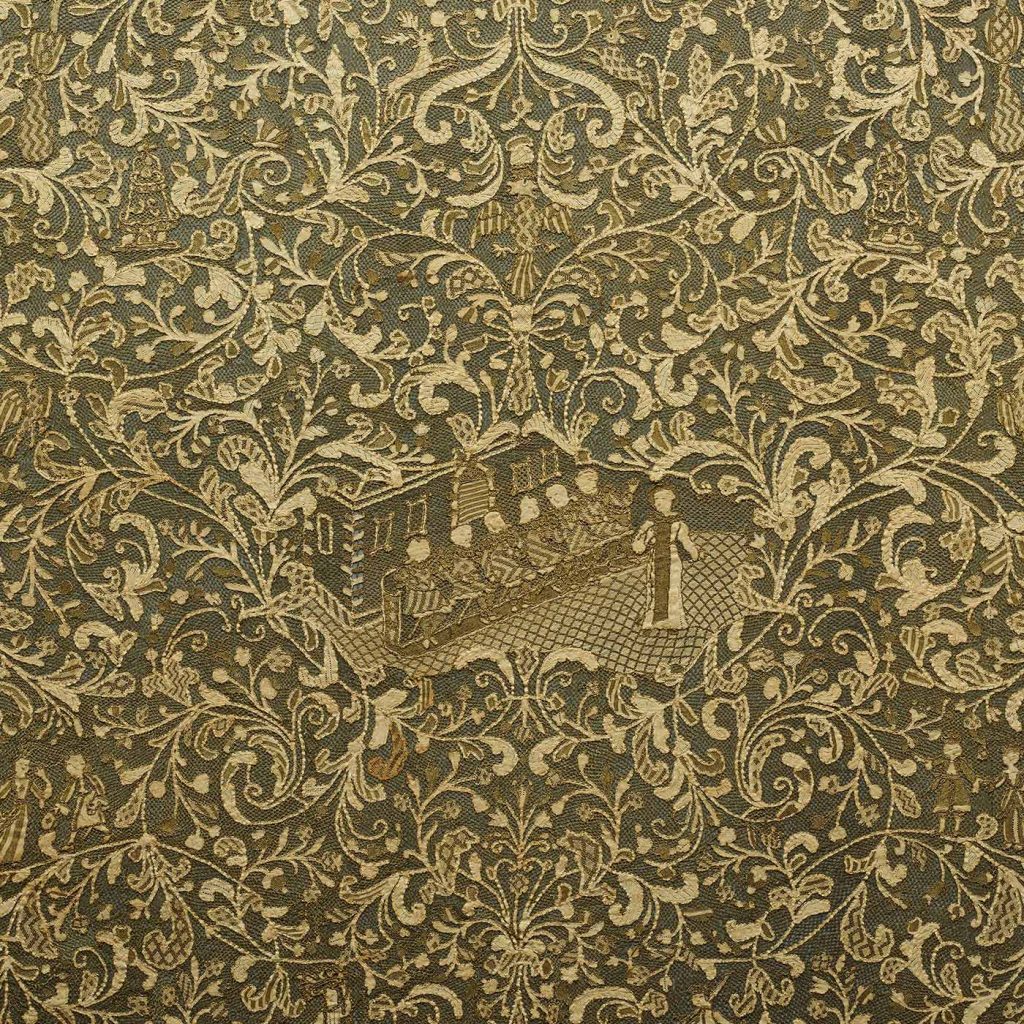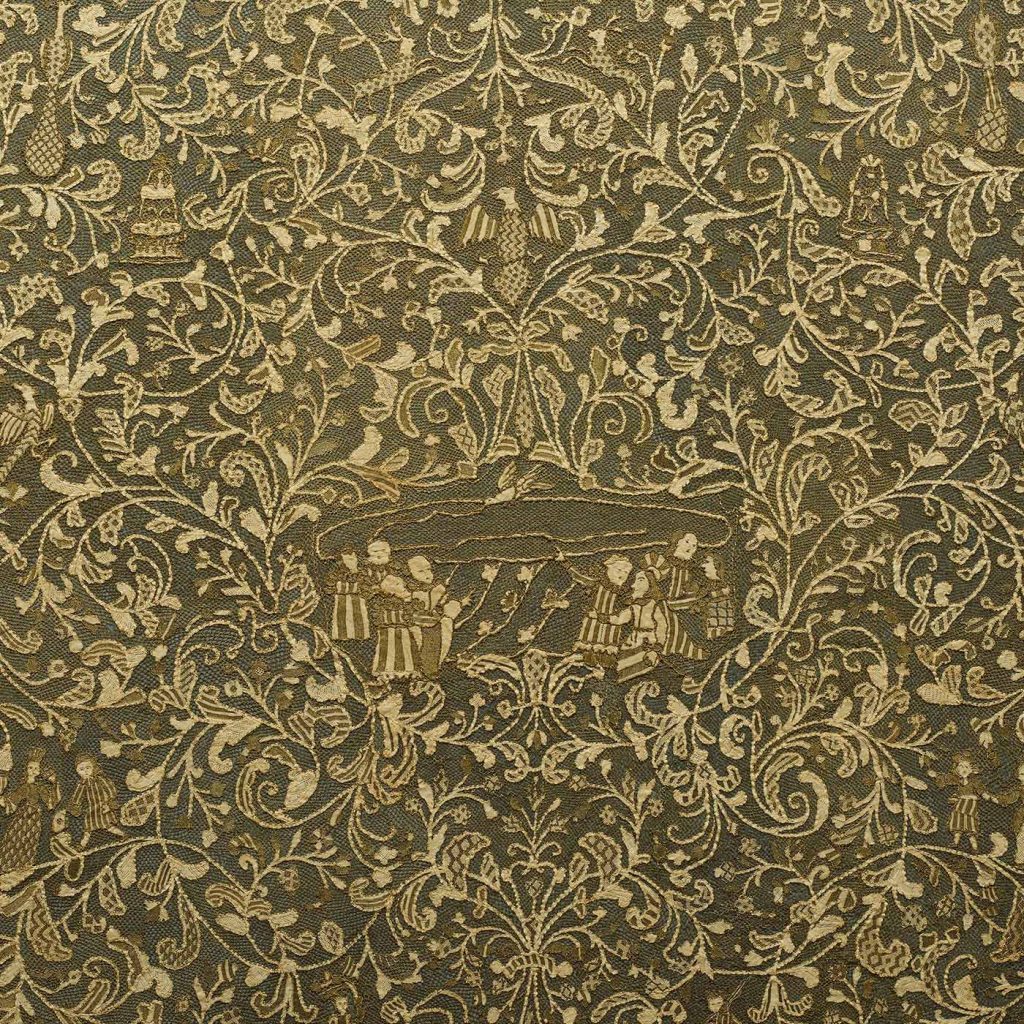





This interactive is best viewed on a large screen.
Click on highlighted areas to view details
Golden needle-lace panel, possibly an antependium (altar frontal) or trimming for an alb, with scenes of the founding of a Cistercian monastery
Flanders, Southern Netherlands; France; or Italy
1695–1710
Linen, silk, and metal threads with silk core
Textilmuseum St. Gallen, Acquired from the Estate of John Jacoby, 1954, 00816
Photo: Michael Rast
Nestled within the larger design of this golden needle lace are five scenes that tell the story of the founding of a Cistercian monastery, which can be identified by its characteristic architecture and the habits of the monks and nuns. In the first scene, on the far left, five nuns greet an entourage of courtiers and soldiers attending a lavishly dressed man, possibly a king. Second, in a garden, a crowned queen with two maids and a child holding her dress train delivers a message to a kneeling man. Third, a man with a halo stands on a hill with a flag emblazoned with the cross of Saint George; smoke or fire billows around him, and he is observed from below by a monk. Fourth, a monk addresses six richly dressed seated men. Finally, on the far right, eight men pray in a garden or field; one points to a dove circling overhead. These featured scenes suggest that the lace was probably commissioned either by or for the monastery. From the details of the clothing worn by these figures, we know that the lace was created between 1695 and 1710. Examining a thread from the darker elements of the lace, conservators have concluded that the lacemakers used brass-wrapped silk to create the piece’s distinctive color and sheen.